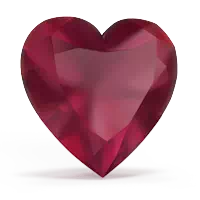
- 4 x 4 mm Heart
- 0.20 carats
- AA Quality
- SI2-Type II
- Origin: Burma

- 4 x 4 mm Heart
- 0.20 carats
- AA Quality
- SI2-Type II
- Origin: Burma
A delicate braid of symbolizes the intertwining of souls in this keepsake ring. The ruby and ruby are snuggled together, cheek to cheek, in a loving embrace. Choose the birthstones of yourself and you loved ones to create a truly special and meaningful ring. Ruby is known as the gem of passion and desire and is the birthstone for the month of July.

